|
|


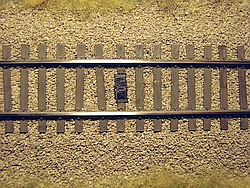
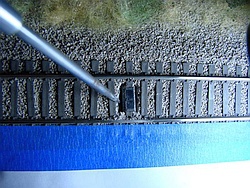
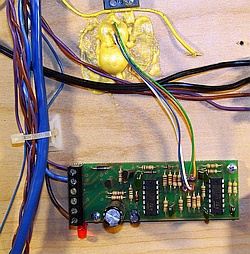
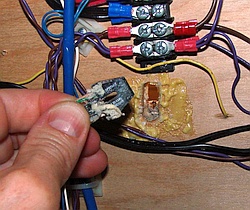

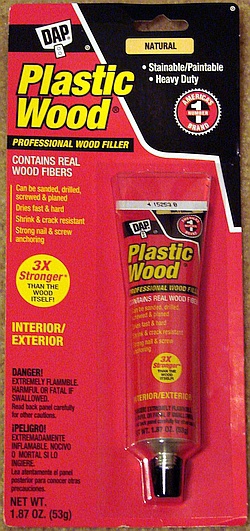

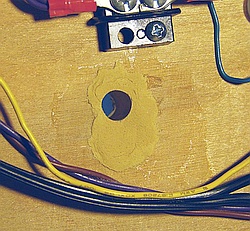

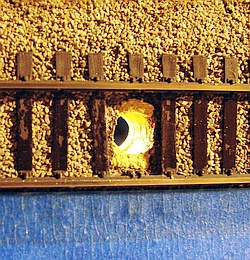



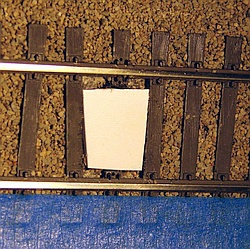
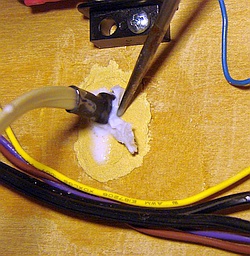
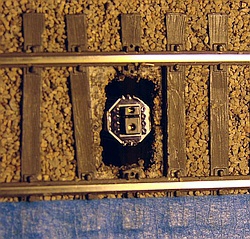
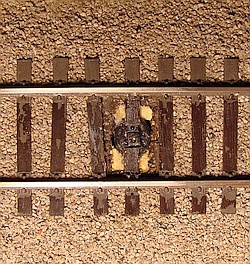
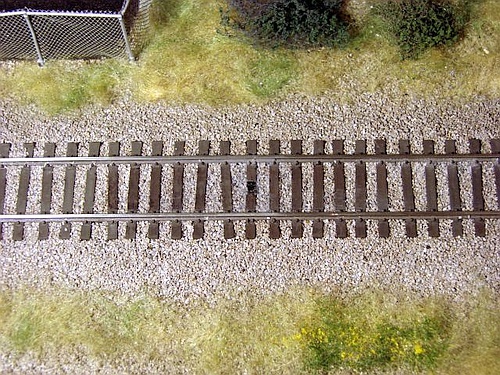
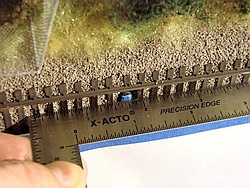

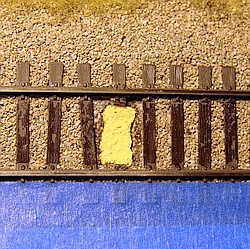





Retrofitting an MSS Optical Detector from Optek to Iowa Scaled Engineering
The small Iowa Scaled Engineering (ISE) optical sensor blends into the track better
than the Optek OPB704W originally used in the Modular Signal System (MSS).
The ISE sensor is also better immune to a wide variety of
ambient lighting conditions, reducing false detections.
This is just one method to do this retrofit - also check out Gary Green's method via the Links page.
The small Iowa Scaled Engineering (ISE) optical sensor blends into the track better
than the Optek OPB704W originally used in the Modular Signal System (MSS).
The ISE sensor is also better immune to a wide variety of
ambient lighting conditions, reducing false detections.
This is just one method to do this retrofit - also check out Gary Green's method via the Links page.
The old Optek OPB704W
installation. Note how the
sensor is slightly wider than a
track tie and is quite noticeable.
installation. Note how the
sensor is slightly wider than a
track tie and is quite noticeable.
The filled hole
from trackside.
from trackside.
Left and Below: Once cured, the
Plastic Wood was (carefully)
drilled for the ISE sensor.
Plastic Wood was (carefully)
drilled for the ISE sensor.
The filled hole from below.
Note the new ISE detection
board (blue) is in place.
Note the new ISE detection
board (blue) is in place.
I used electrical shrink-
wrap tubing to protect
the sensor electronics.
wrap tubing to protect
the sensor electronics.
DAP Auto/Marine Sealant was used to seal the small gap between the shrink
tube edges and the sensor component. Be certain to avoid getting sealant on
the two little windows, as those are the actual infrared sensing elements.
tube edges and the sensor component. Be certain to avoid getting sealant on
the two little windows, as those are the actual infrared sensing elements.
A mash of paper towel bits and
white glue was stuffed into the
spaces around the ISE.
white glue was stuffed into the
spaces around the ISE.
A straight-edge was used to confirm
the top of the ISE is flush with the
track ties. The blue tape protects the
sensor from being fouled with glue, etc.
the top of the ISE is flush with the
track ties. The blue tape protects the
sensor from being fouled with glue, etc.
A styrene plate was placed over
the hole to prevent filler from
sploobing up onto the track.
the hole to prevent filler from
sploobing up onto the track.
Once the ISE sensor was firmly in
place and the glue cured, small
lengths of plastic track tie were
placed on either side of the sensor to
complete the appearance of a full tie.
place and the glue cured, small
lengths of plastic track tie were
placed on either side of the sensor to
complete the appearance of a full tie.
Ballast was back-filled around the sensor, making it virtually disappear
into the track work. Be sure to cover the sensor with tape while gluing
the ballast, touching up the paint on the ties, weathering the track, etc.
into the track work. Be sure to cover the sensor with tape while gluing
the ballast, touching up the paint on the ties, weathering the track, etc.
The ISE sensor temporarily set in
position. Note how much smaller
than the Optek it is, so the hole in
the track must be made smaller.
position. Note how much smaller
than the Optek it is, so the hole in
the track must be made smaller.
I used this material, DAP
Plastic Wood, to completely
fill the oversized hole.
Plastic Wood, to completely
fill the oversized hole.
The foam was dug out
until the Optek could be
pulled out from below.
until the Optek could be
pulled out from below.
The ballast around the Optek
was wetted to loosen the glue,
then dug out with a pick.
was wetted to loosen the glue,
then dug out with a pick.
Below decks, the Optek had been
secured with expanded foam.
Note the soon-to-be-replaced
Heathcote detector board (green).
secured with expanded foam.
Note the soon-to-be-replaced
Heathcote detector board (green).
-- About
-- Contact
-- Diesels
-- Links
entire website copyright Gregg Fuhriman
created with CoffeeCup Visual Site Designer
created with CoffeeCup Visual Site Designer
-- Layouts
-- Modules
-- Signalling









